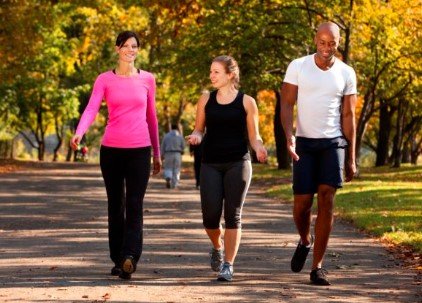Cold Morning Power Walks Boosting Your Energy and Health
Cold morning power walks are an invigorating way to start your day, offering numerous health benefits and a significant energy boost. The crisp air, quiet surroundings, and natural light all contribute to an experience that refreshes your body and mind. Incorporating cold morning power walks into your routine can improve your overall well-being and set a positive tone for the day ahead.

The Benefits of Cold Morning Power Walks
Engaging in a power walk during cold mornings brings multiple advantages. One of the most significant benefits is the increased calorie burn. When your body is exposed to colder temperatures, it works harder to maintain its core warmth, leading to higher energy expenditure. This makes your walk more effective for weight management and overall fitness.
Cold morning power walks also improve cardiovascular health. Walking at a brisk pace gets your heart rate up, which strengthens your heart and lungs. Over time, this can lead to improved endurance, lower blood pressure, and a reduced risk of heart disease.
Mental health benefits are another compelling reason to embrace cold morning power walks. The combination of physical activity and exposure to natural light can elevate your mood and reduce symptoms of anxiety and depression. The release of endorphins during exercise acts as a natural stress reliever, leaving you feeling more relaxed and focused throughout the day.
Preparing for a Cold Morning Power Walk
To make the most of your cold morning power walks, proper preparation is essential. Dressing in layers is key. Start with a moisture-wicking base layer to keep sweat away from your skin, add a thermal layer for insulation, and top it off with a wind-resistant jacket. This layering approach allows you to adjust your clothing as your body warms up during the walk.
Choosing the right footwear is also crucial. Opt for shoes with good grip and insulation to keep your feet warm and prevent slips on icy surfaces. Wool or thermal socks are ideal for maintaining warmth and preventing blisters.
Before heading out, take a few minutes to warm up your muscles. Cold temperatures can make your muscles stiffer, increasing the risk of injury. Simple stretches and a light jog in place can help loosen up your body and prepare it for the walk.
Staying Motivated on Cold Mornings
Cold mornings can make it tempting to stay in bed rather than venture outside for a walk. However, there are strategies to help you stay motivated. Setting a specific goal for your walk, such as a certain distance or time, can give you a sense of purpose and accomplishment. Tracking your progress using a fitness app or journal can also be motivating as you see your improvements over time.
Finding a walking partner can make the experience more enjoyable and hold you accountable. Whether it’s a friend, family member, or even a pet, having someone to walk with can make the cold mornings feel less daunting.
If walking alone, consider listening to music, a podcast, or an audiobook to keep your mind engaged. The distraction can make the time pass more quickly and take your focus off the cold.
Health Considerations for Cold Morning Power Walks
While cold morning power walks offer many benefits, it’s important to take certain health considerations into account. People with conditions like asthma or cardiovascular issues should consult a doctor before engaging in outdoor exercise in cold weather. The cold air can constrict airways, making it harder to breathe for those with respiratory issues.
Additionally, it’s important to stay hydrated. Cold weather can reduce your sense of thirst, but your body still loses water through sweat and breathing. Drink water before and after your walk to stay hydrated.
Be mindful of the signs of frostbite and hypothermia, especially if you’ll be out for an extended period. Numbness, tingling, and a pale or waxy appearance of the skin are warning signs of frostbite, while symptoms of hypothermia include shivering, confusion, and slurred speech. If you experience any of these, it’s important to get indoors and warm up immediately.
Enhancing the Experience of Cold Morning Power Walks
To enhance the experience of your cold morning power walks, consider varying your route. Exploring different neighborhoods or parks can keep the walks interesting and expose you to new scenery. Incorporating hills or inclines into your route can add a challenge and boost the intensity of your workout.
Mindful walking can also deepen the benefits of your power walks. Focus on your breathing, the rhythm of your steps, and the sights and sounds around you. This practice can turn your walk into a meditative experience, reducing stress and promoting mental clarity.
Lastly, reward yourself for your efforts. A warm cup of tea or a healthy breakfast after your walk can serve as a motivating incentive. Celebrating your commitment to your health and well-being reinforces the positive habit of cold morning power walks.
Conclusion
Cold morning power walks are a powerful way to invigorate your body and mind, offering numerous physical and mental health benefits. By preparing properly, staying motivated, and being mindful of your health, you can make the most of these walks and integrate them into your daily routine. As you embrace the challenges of cold weather, you’ll find that the rewards of increased energy, improved fitness, and enhanced well-being are well worth the effort.



















